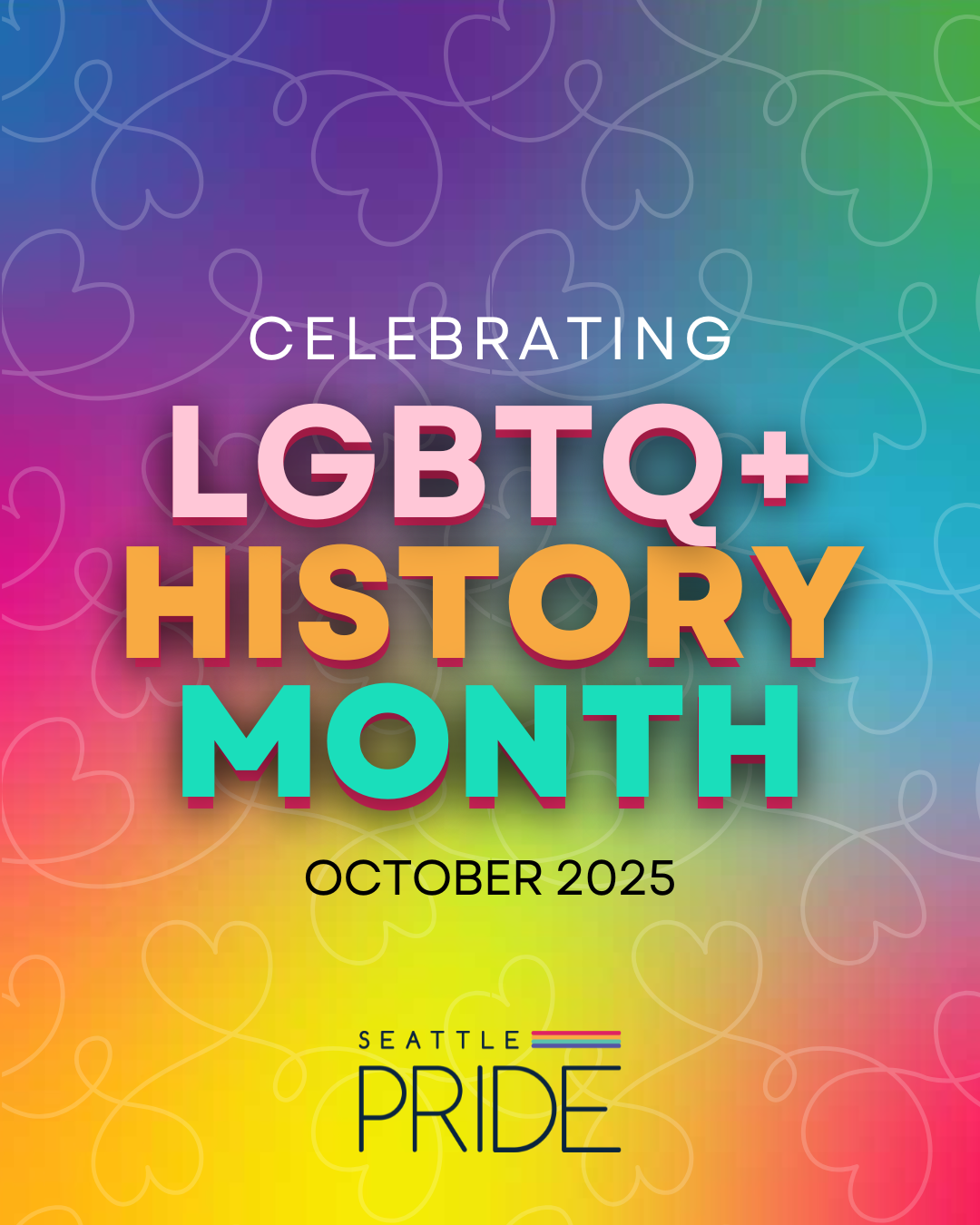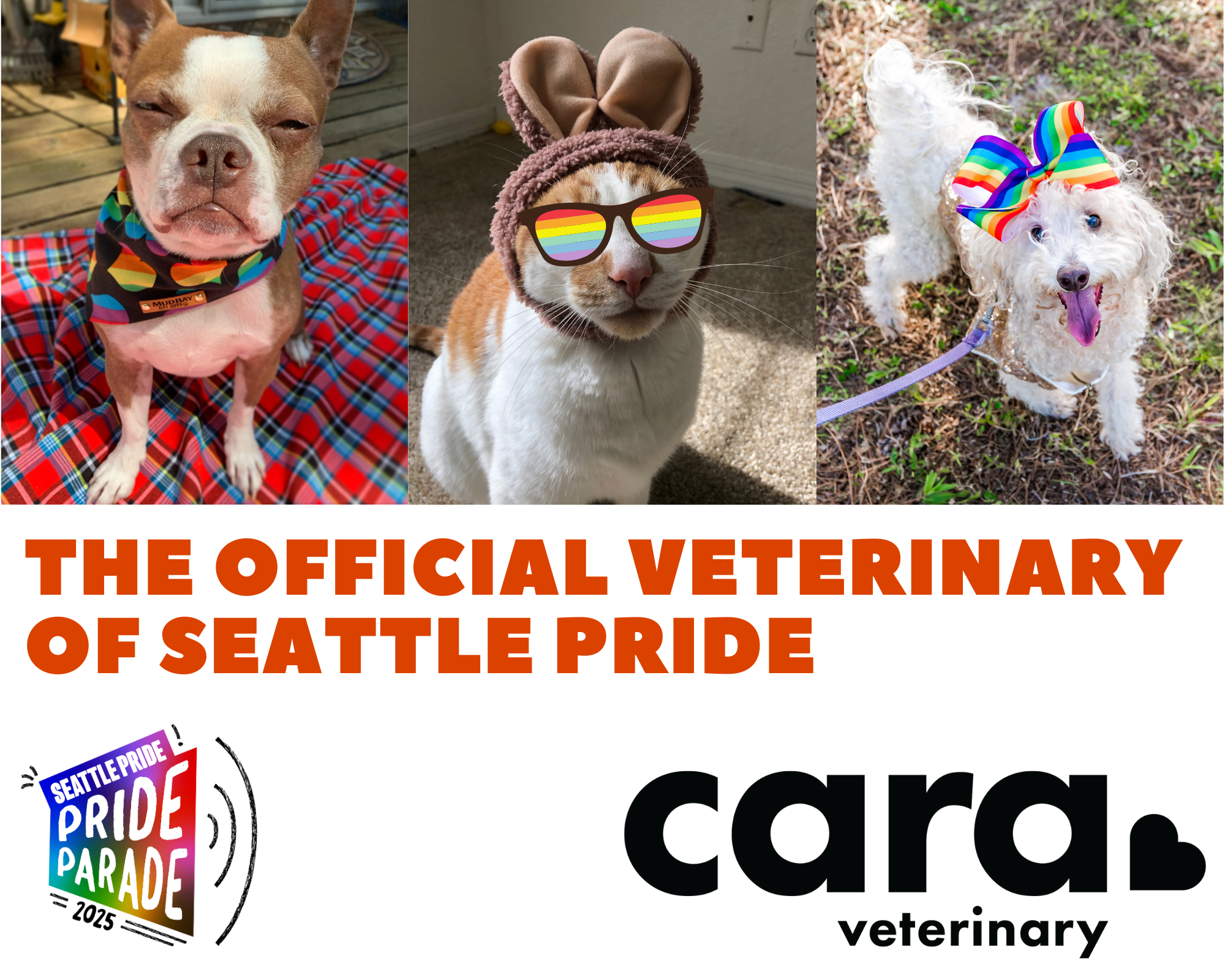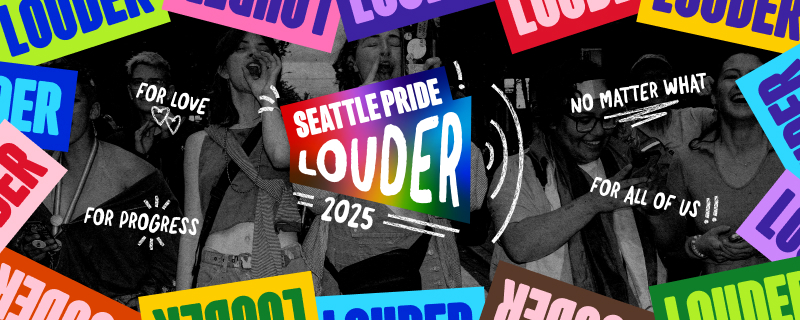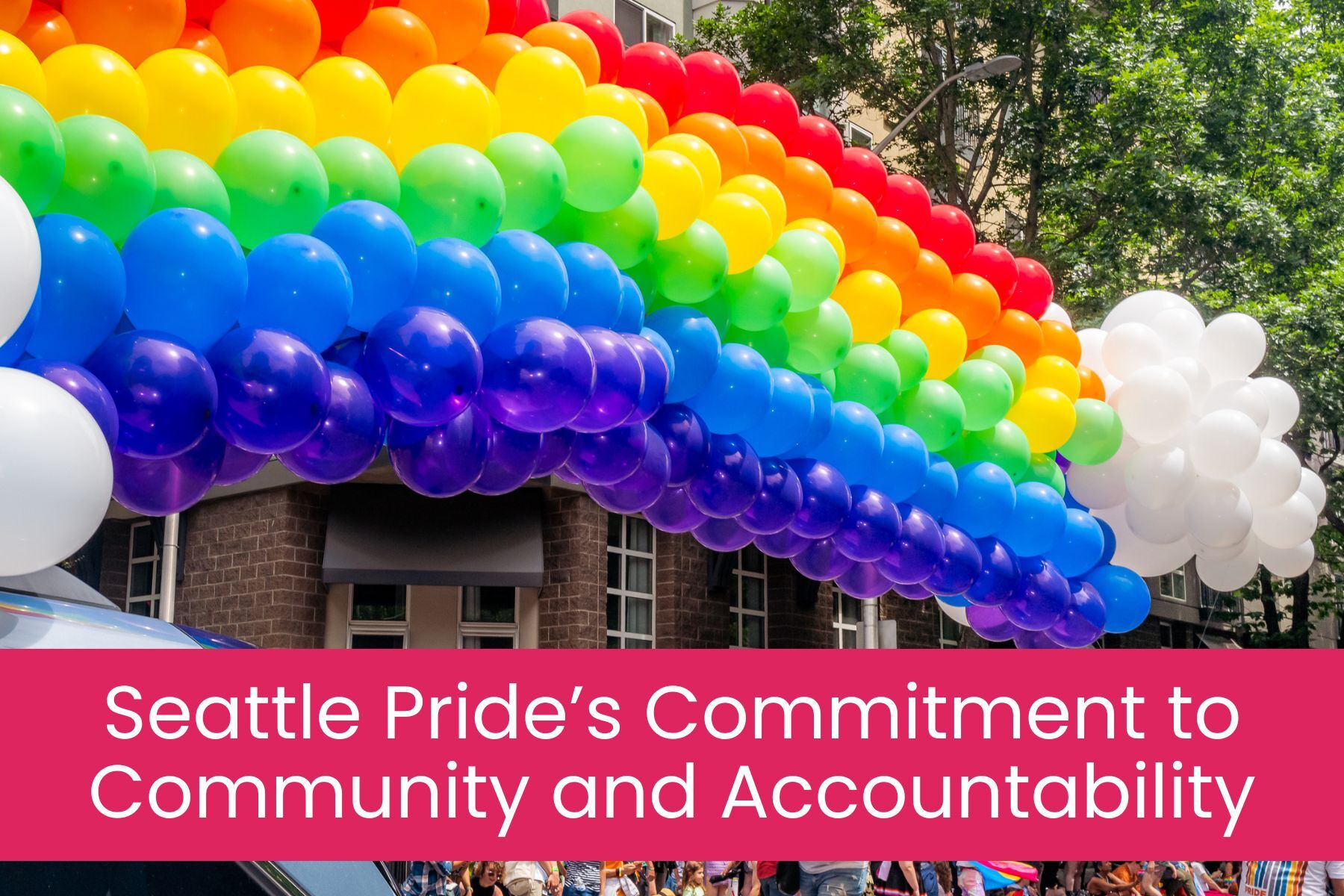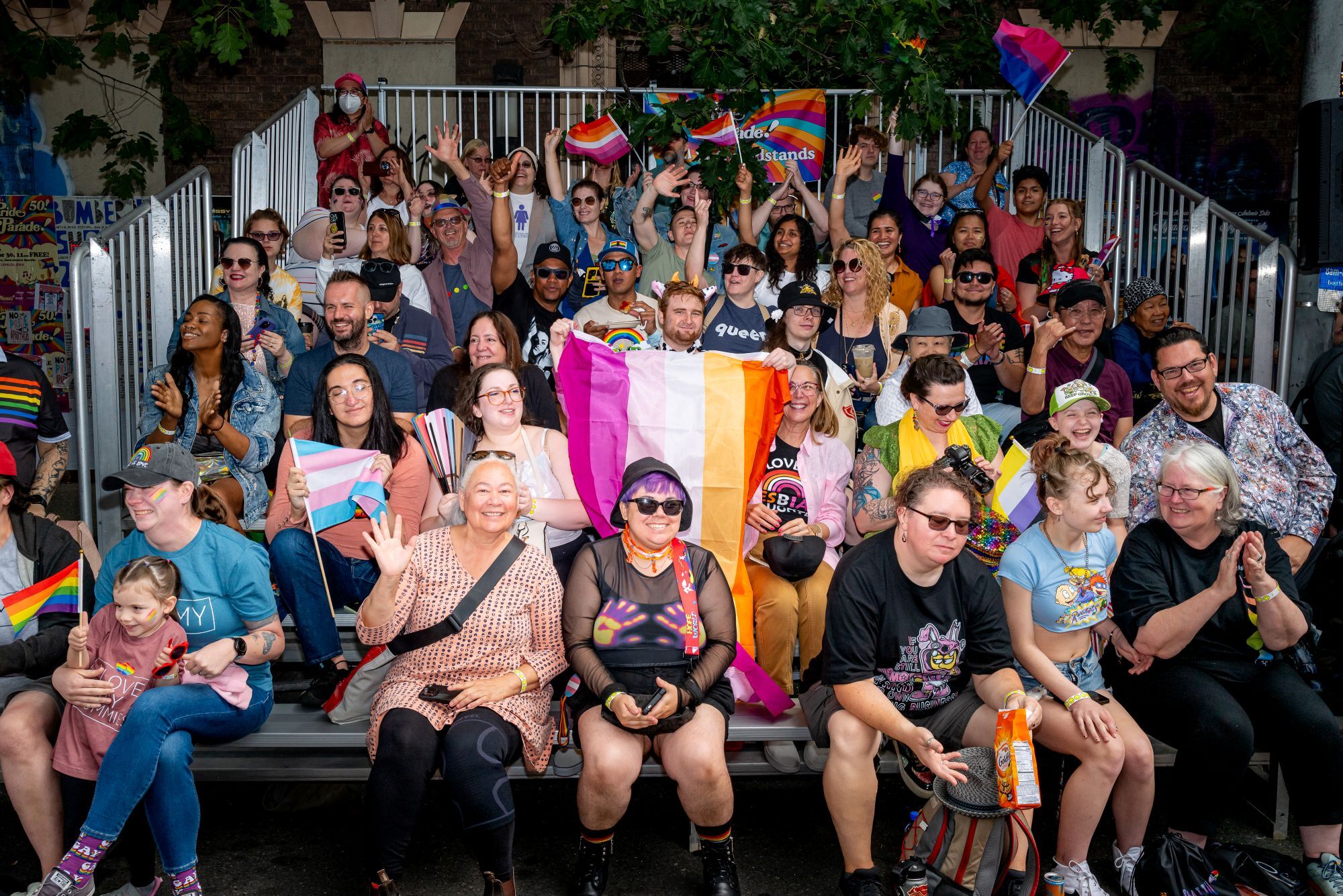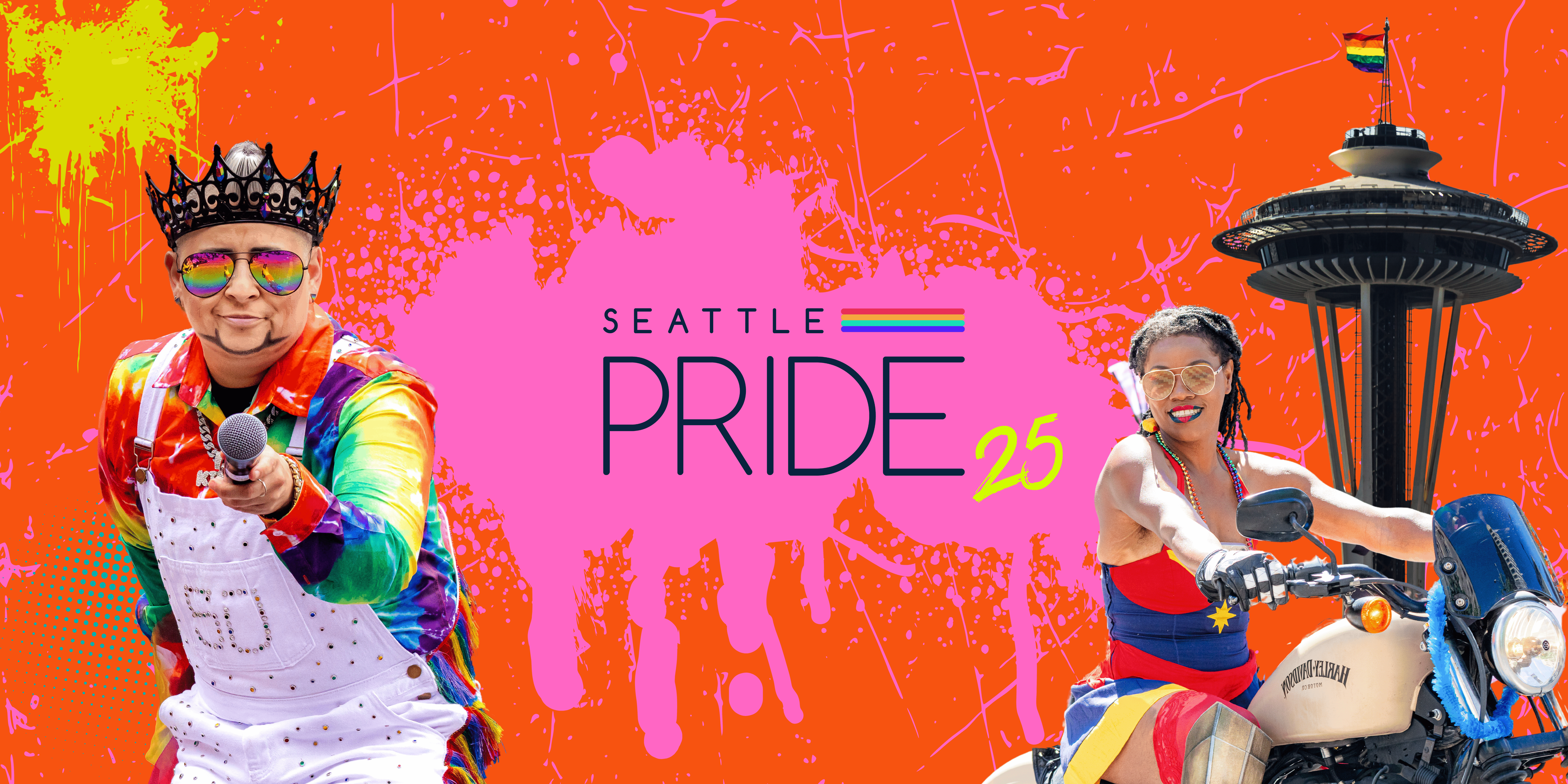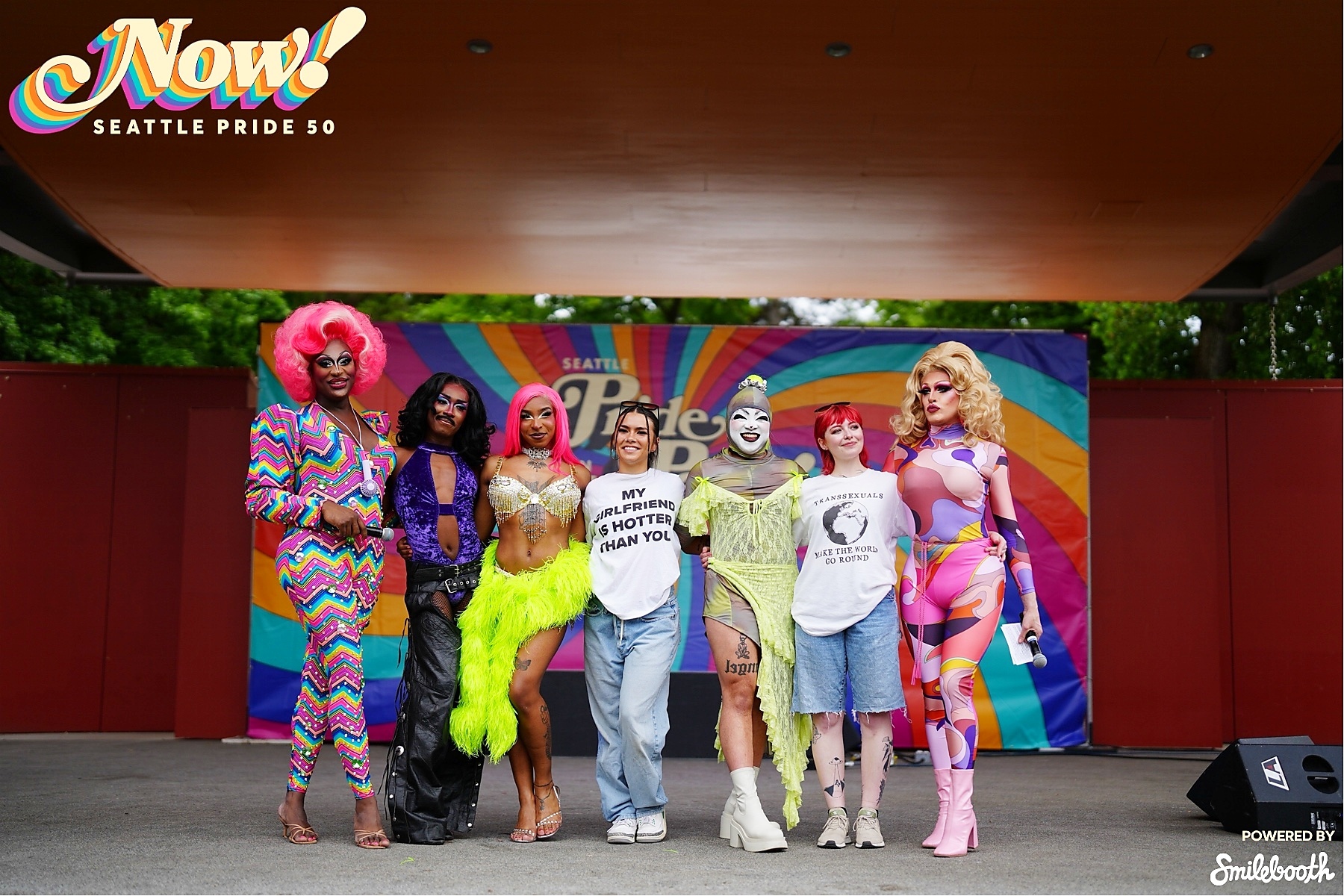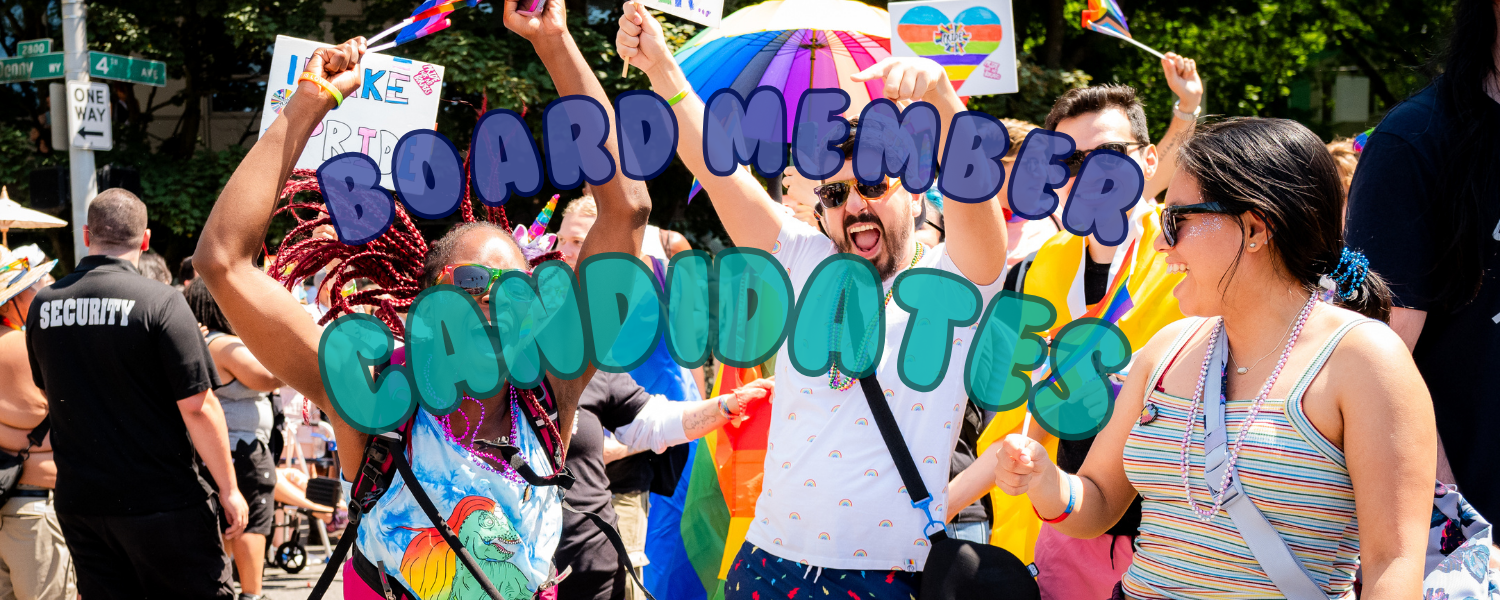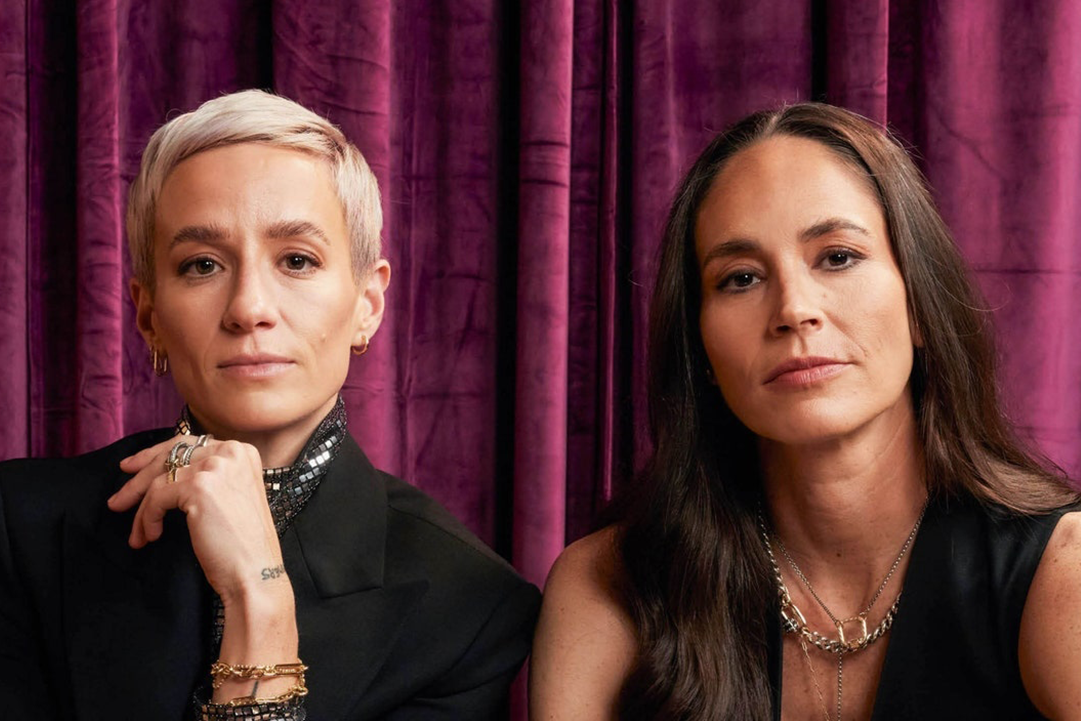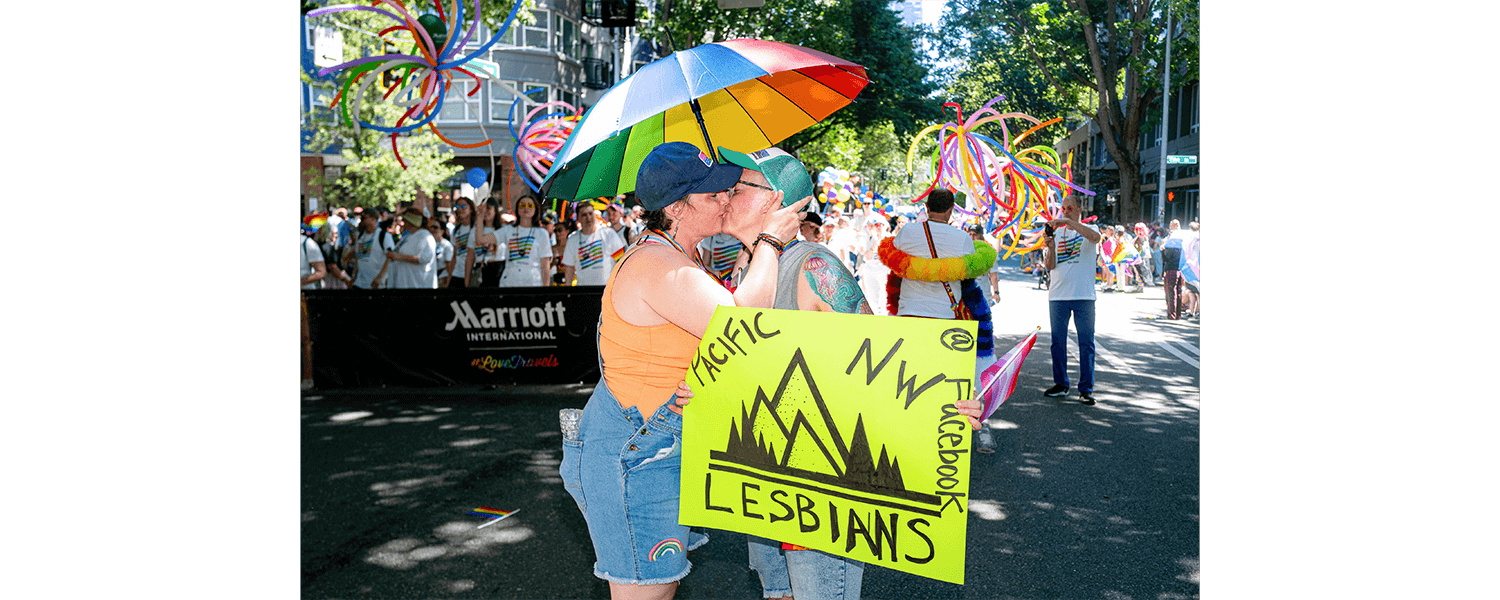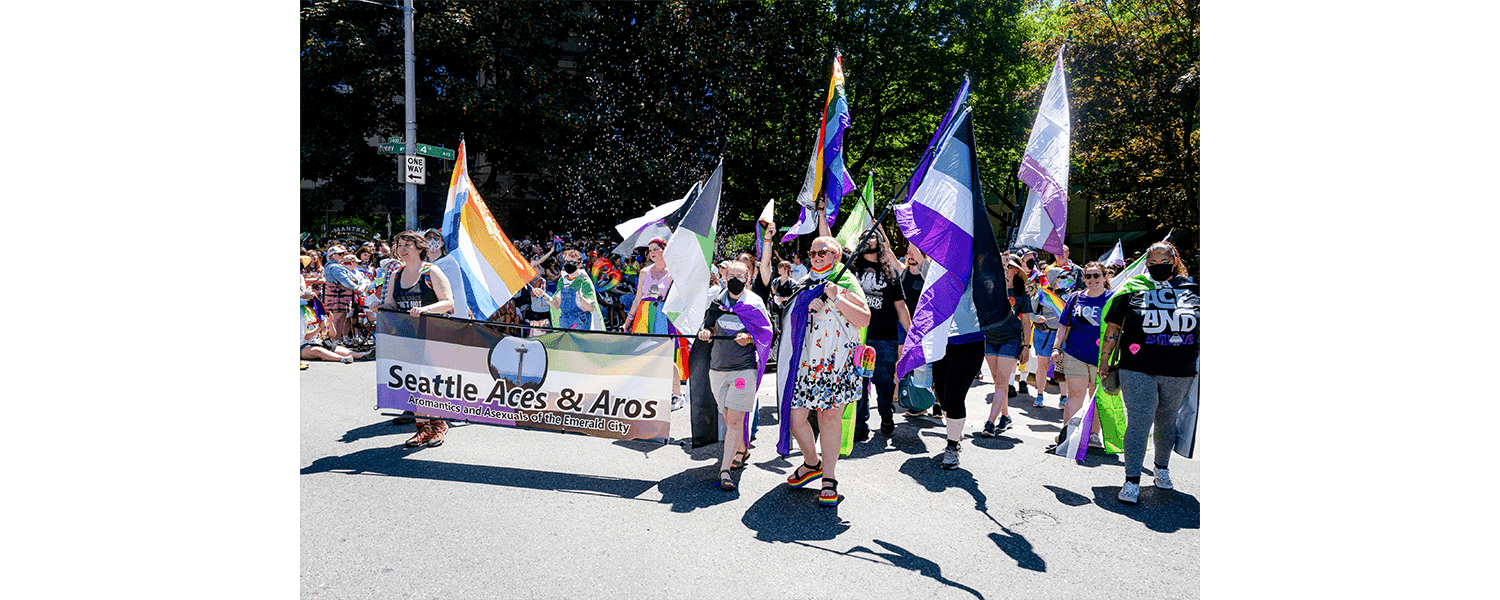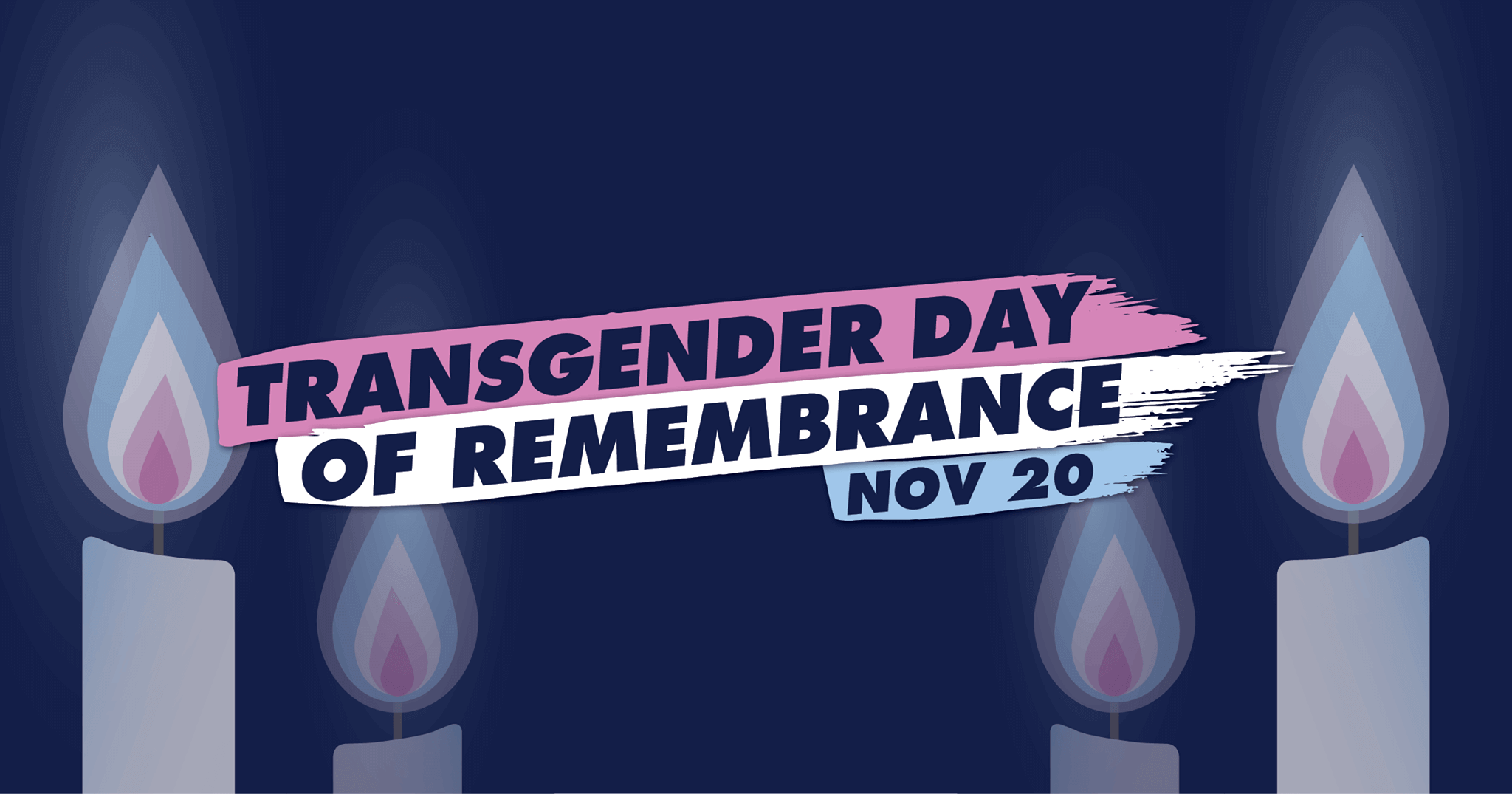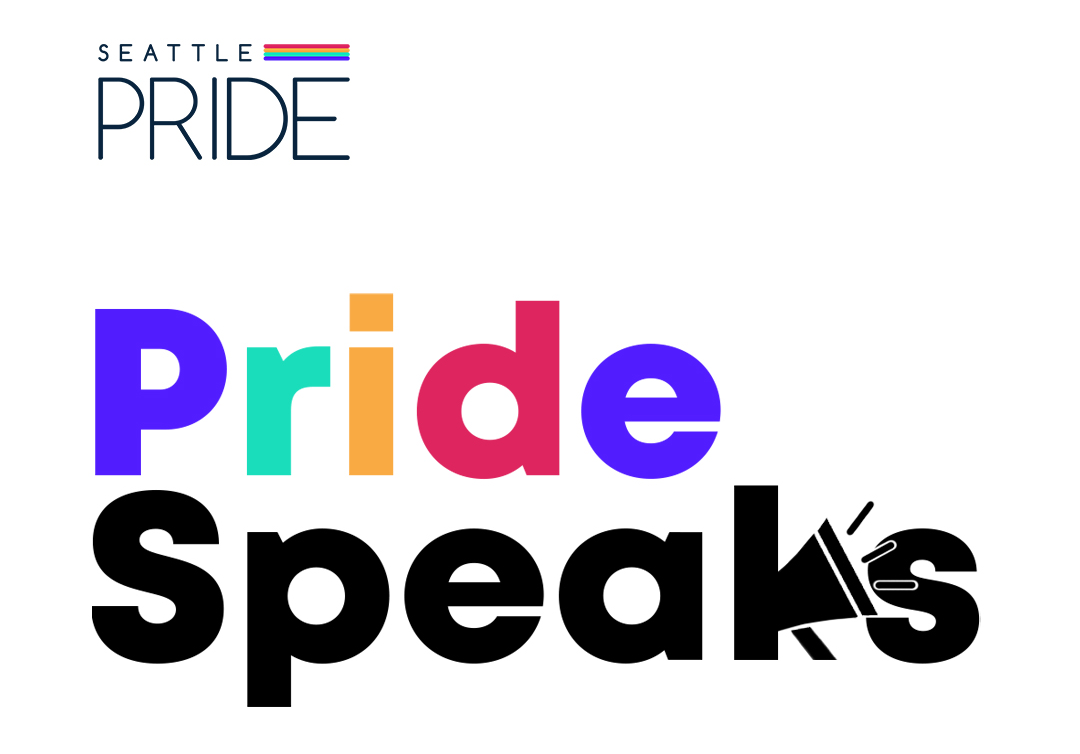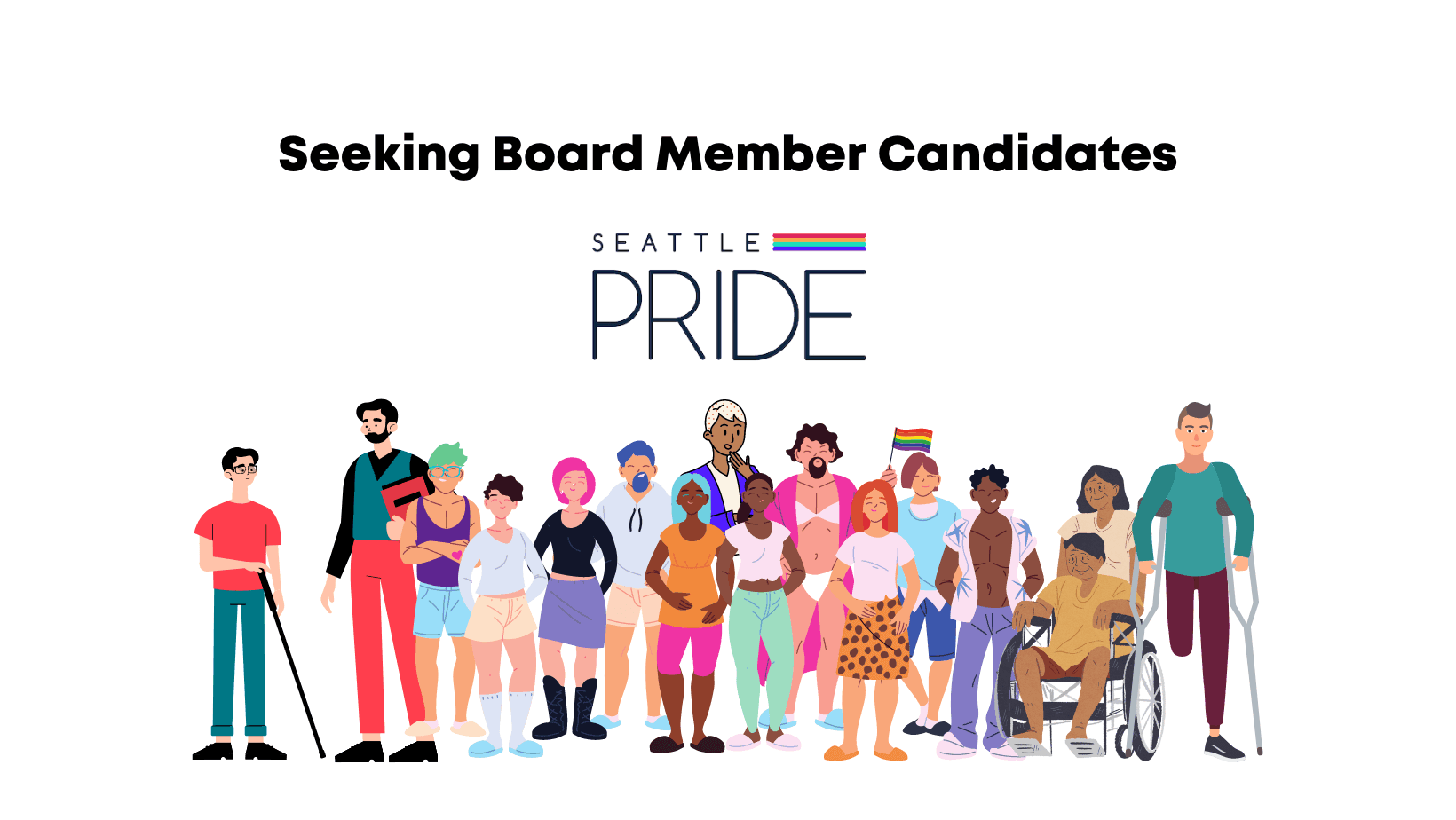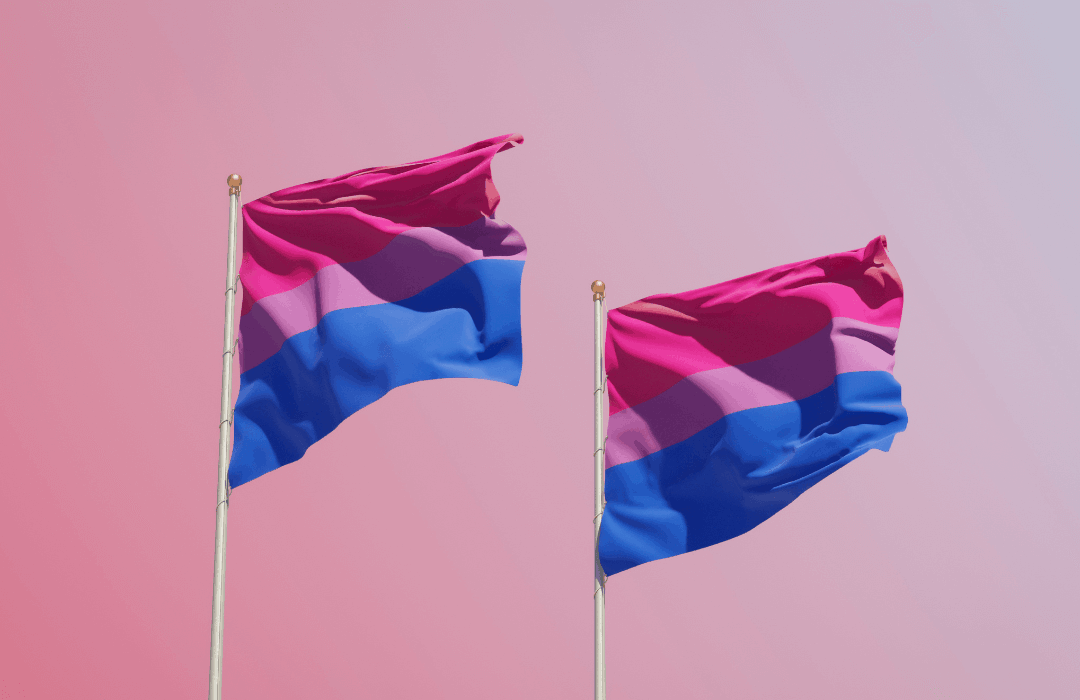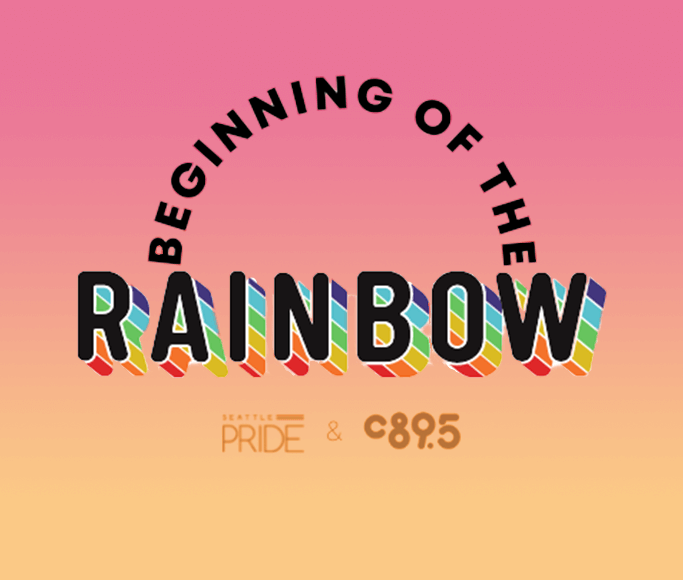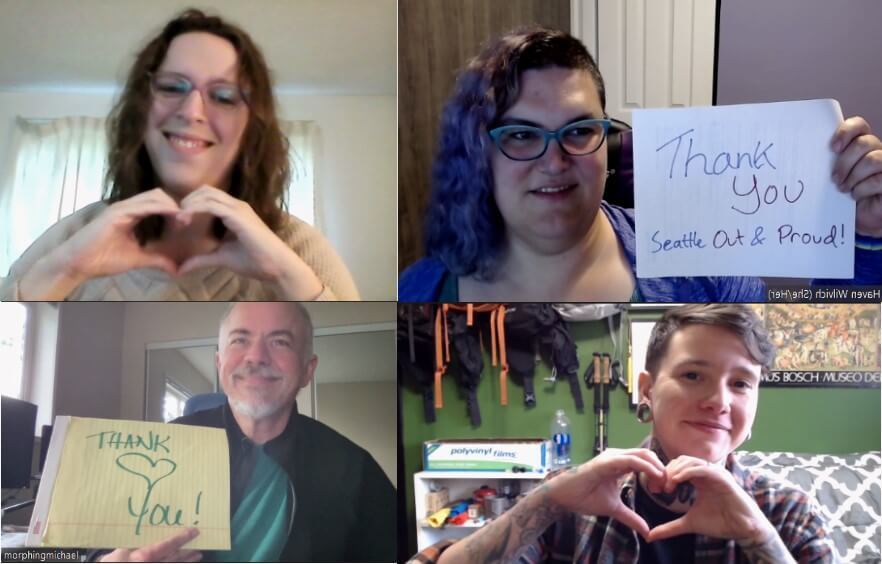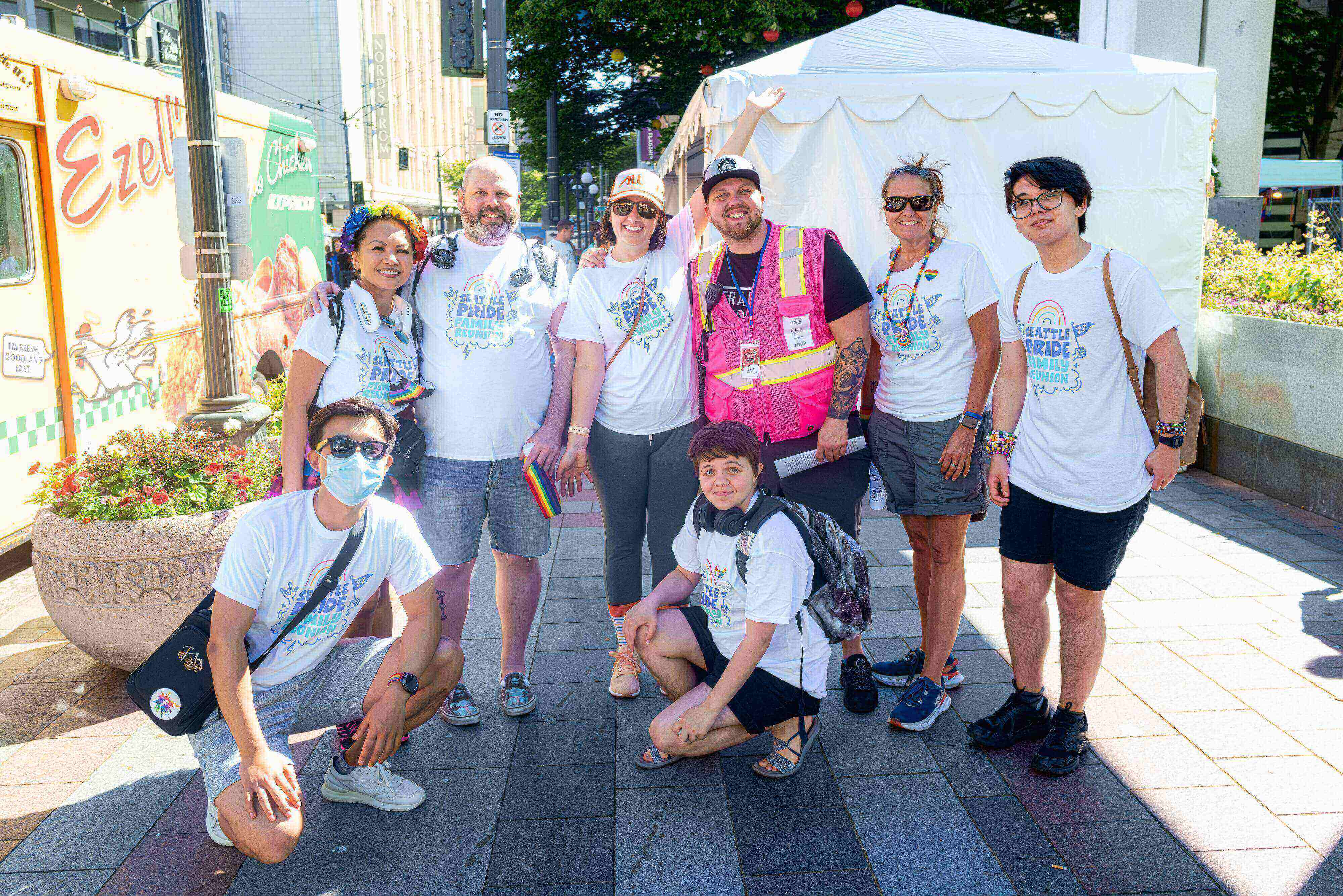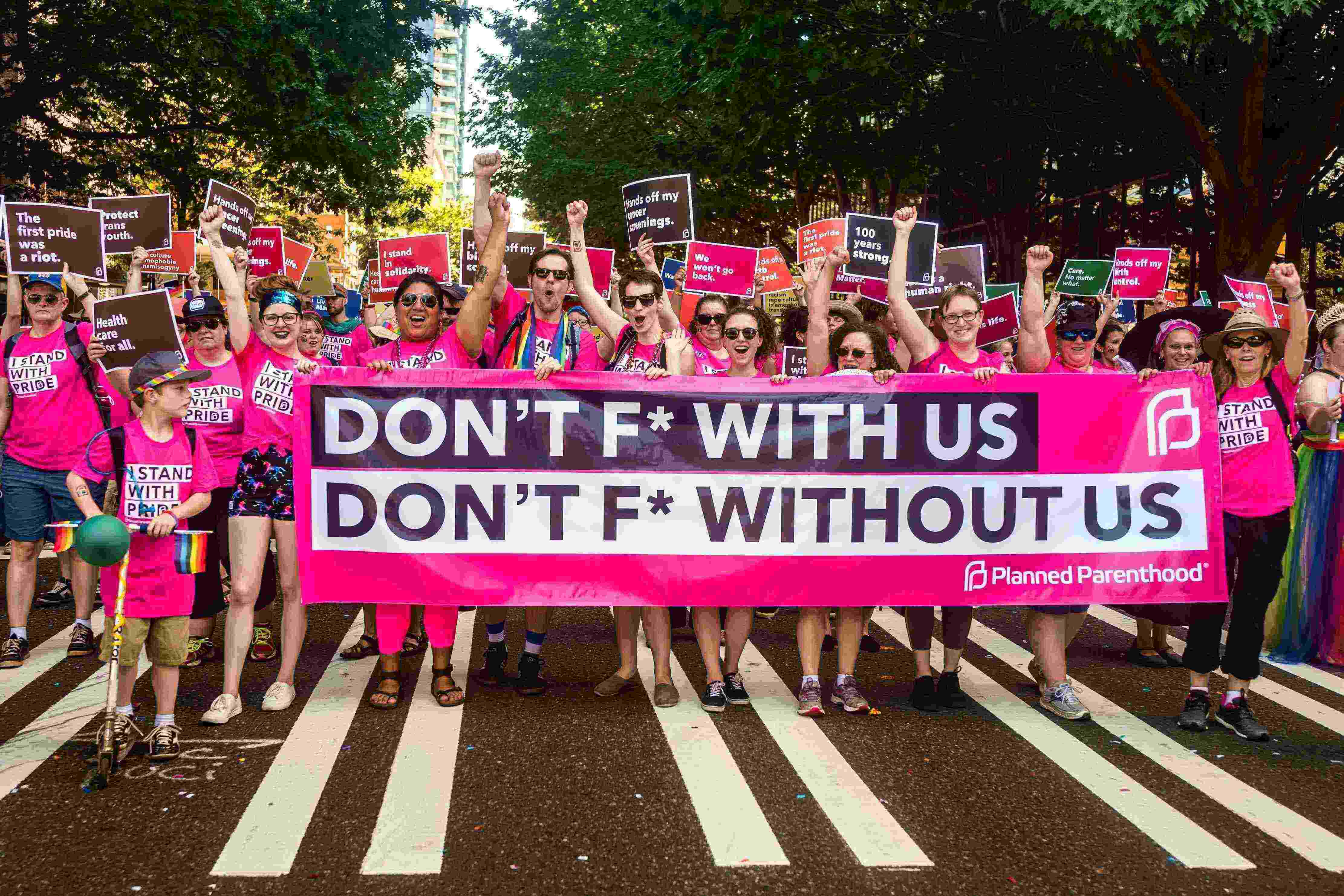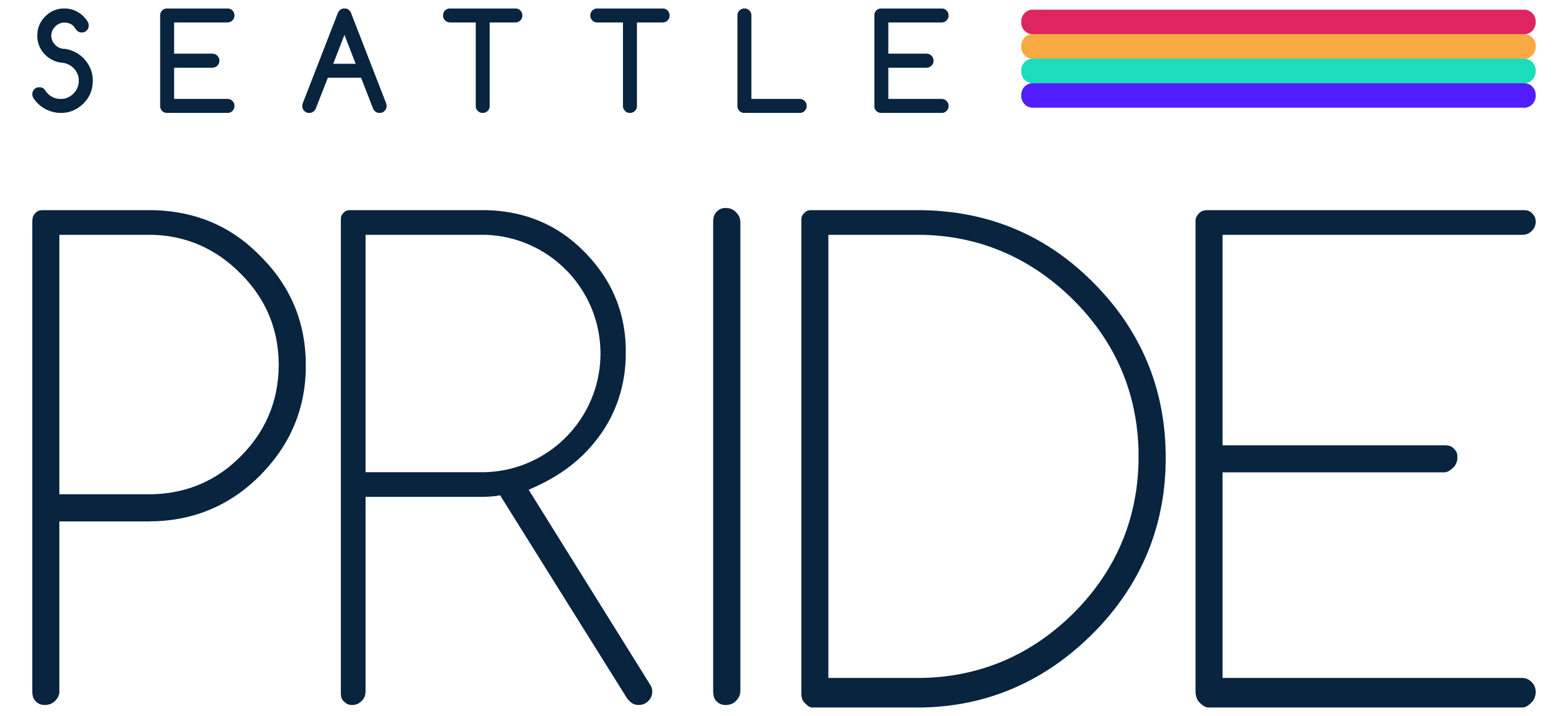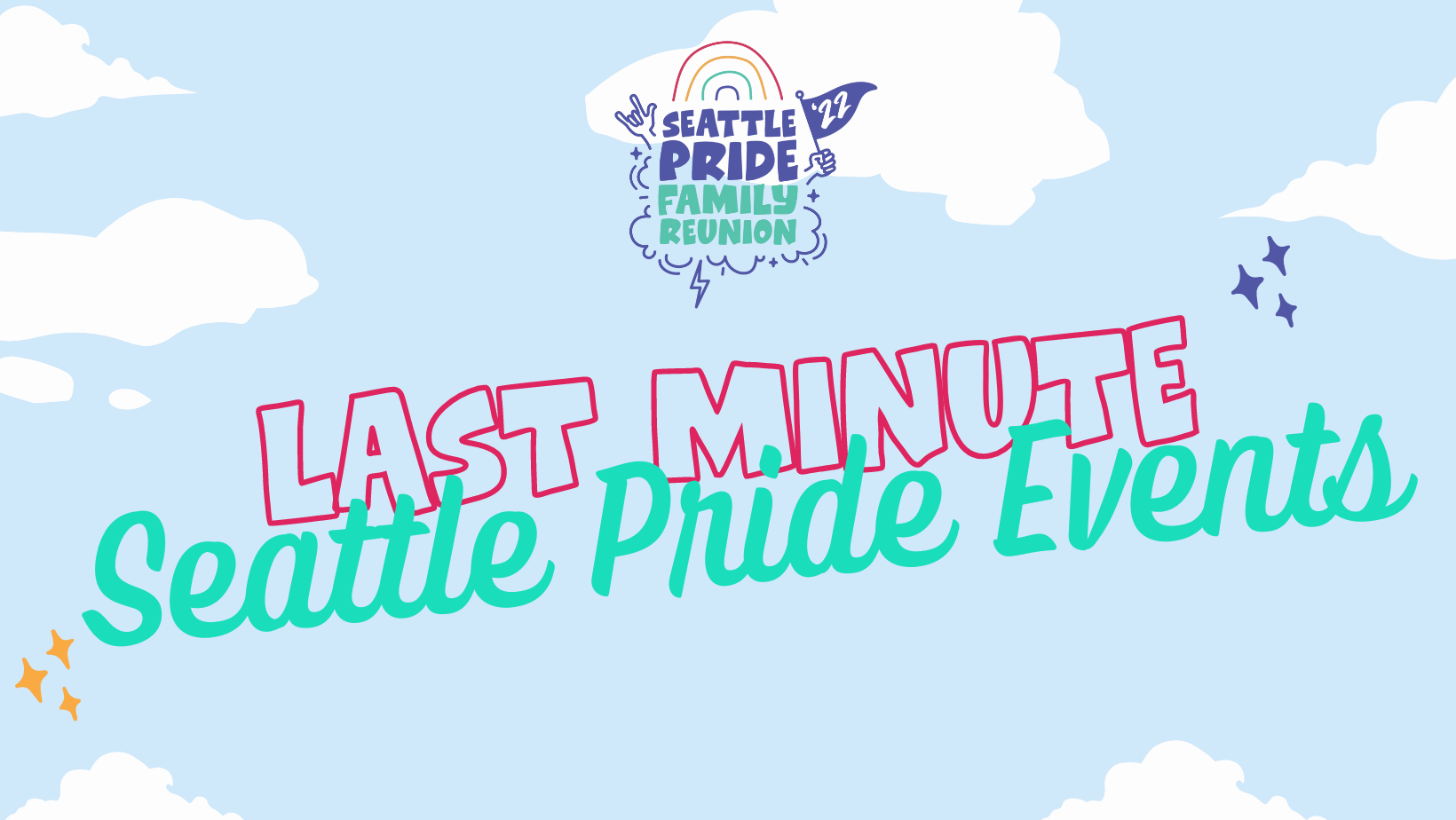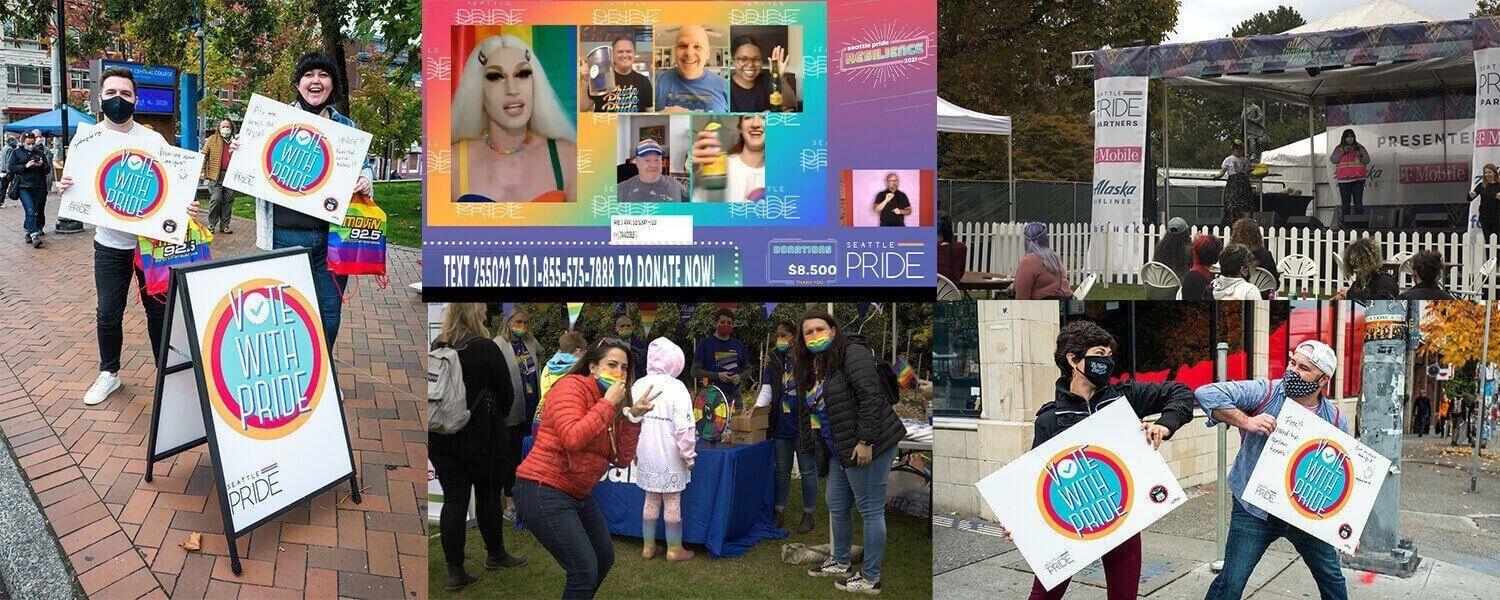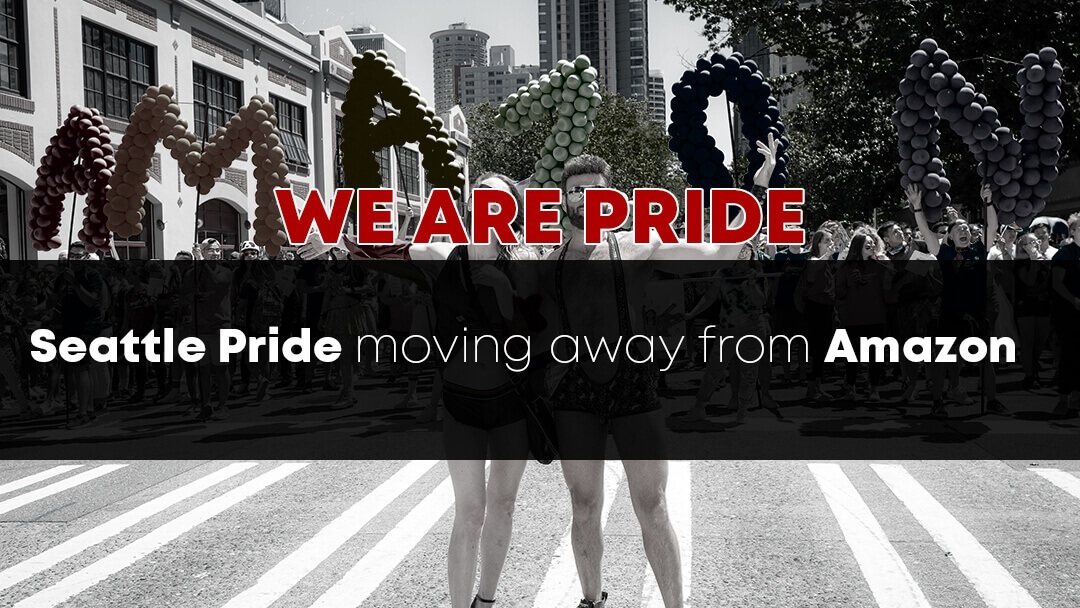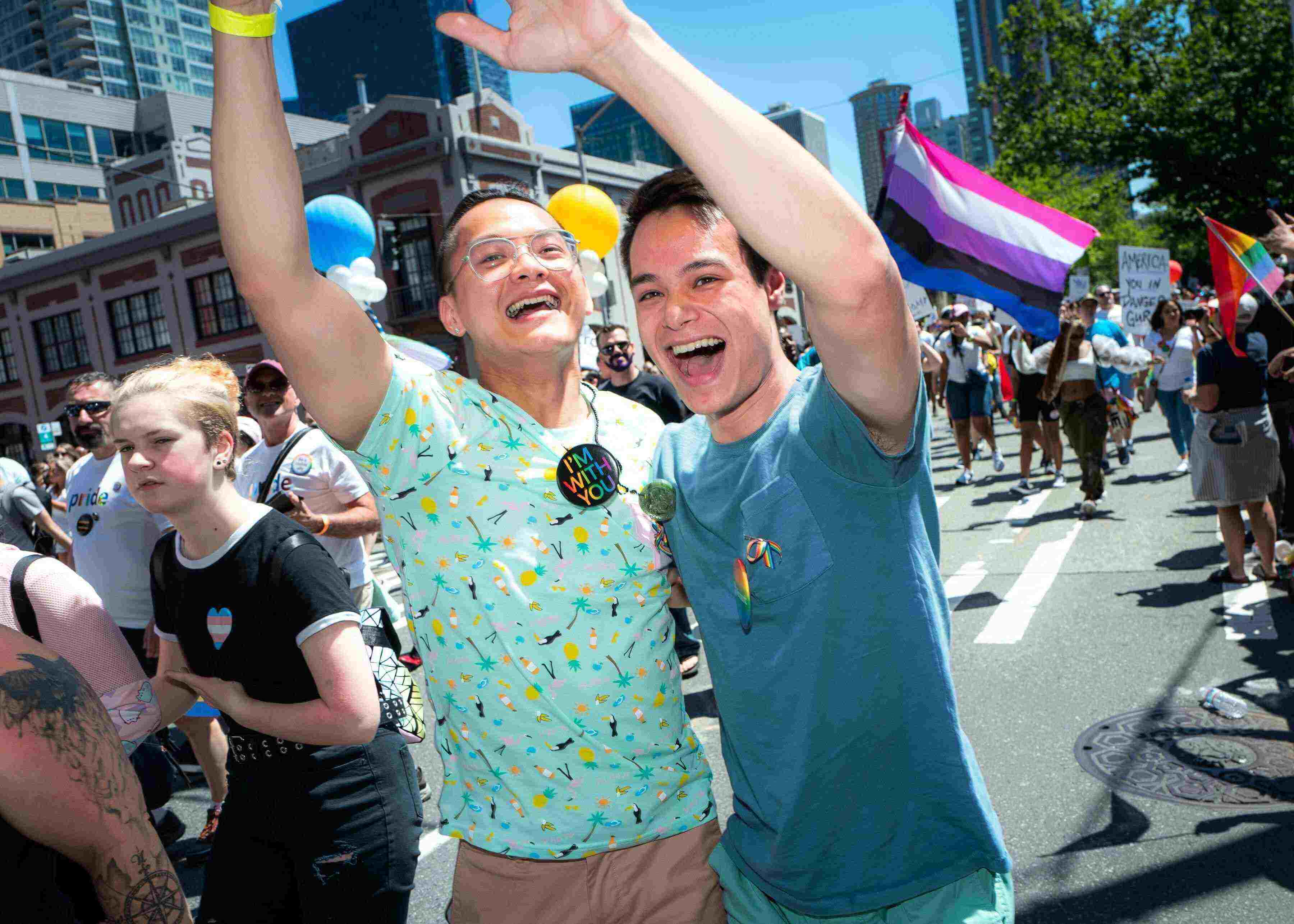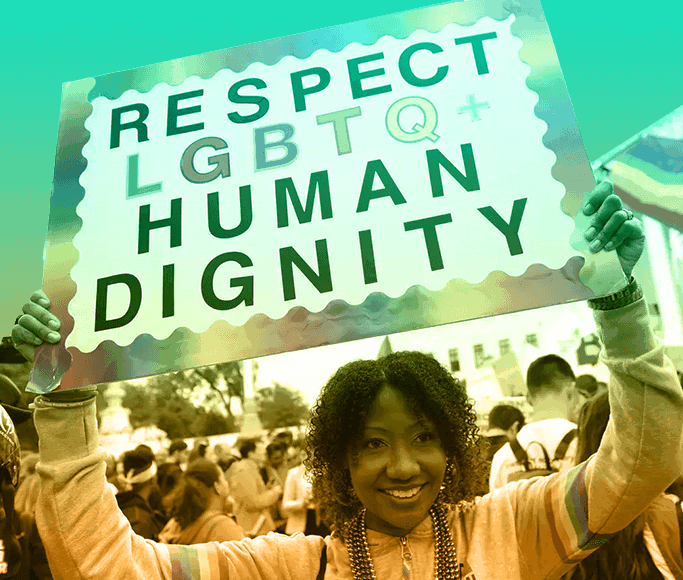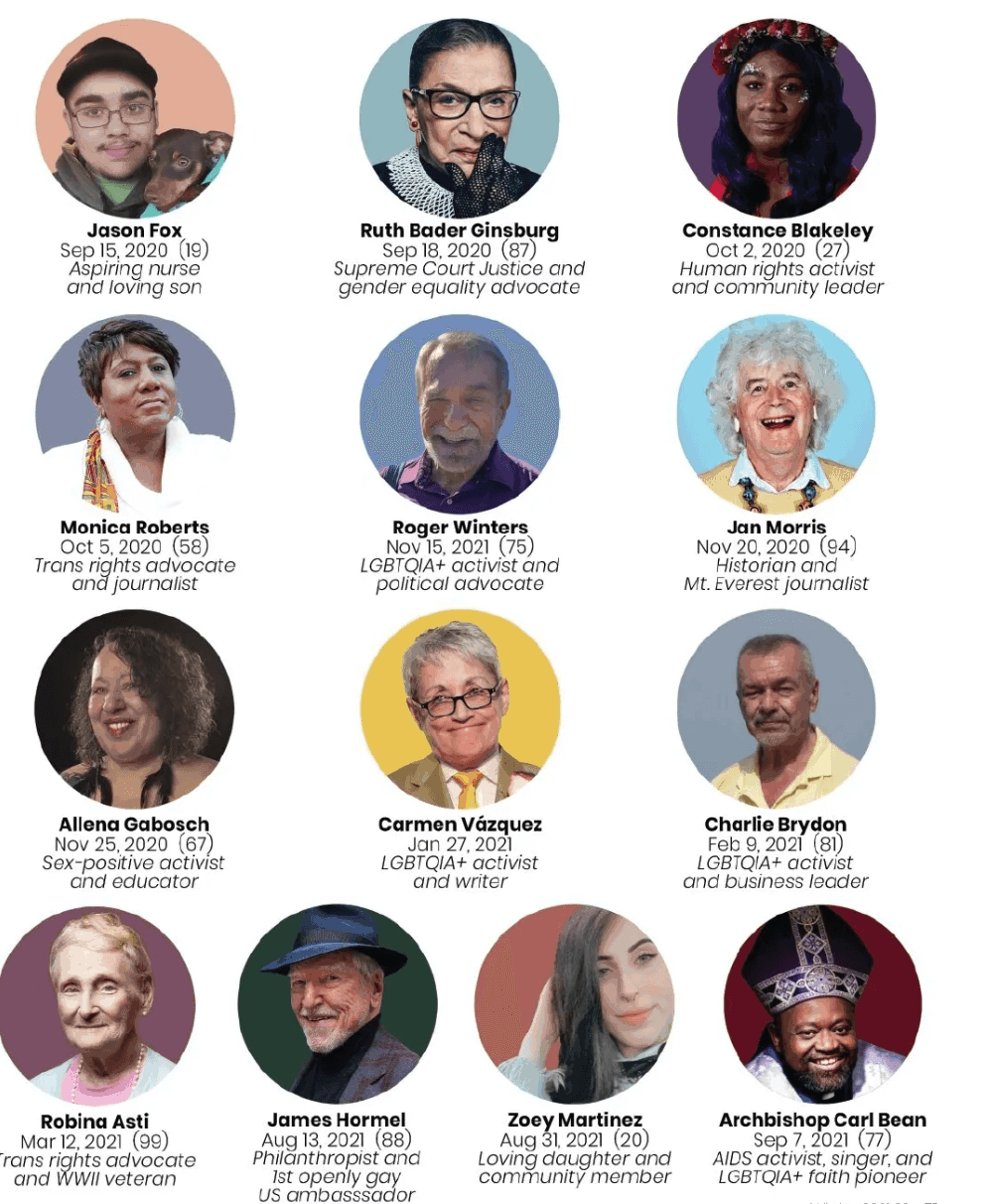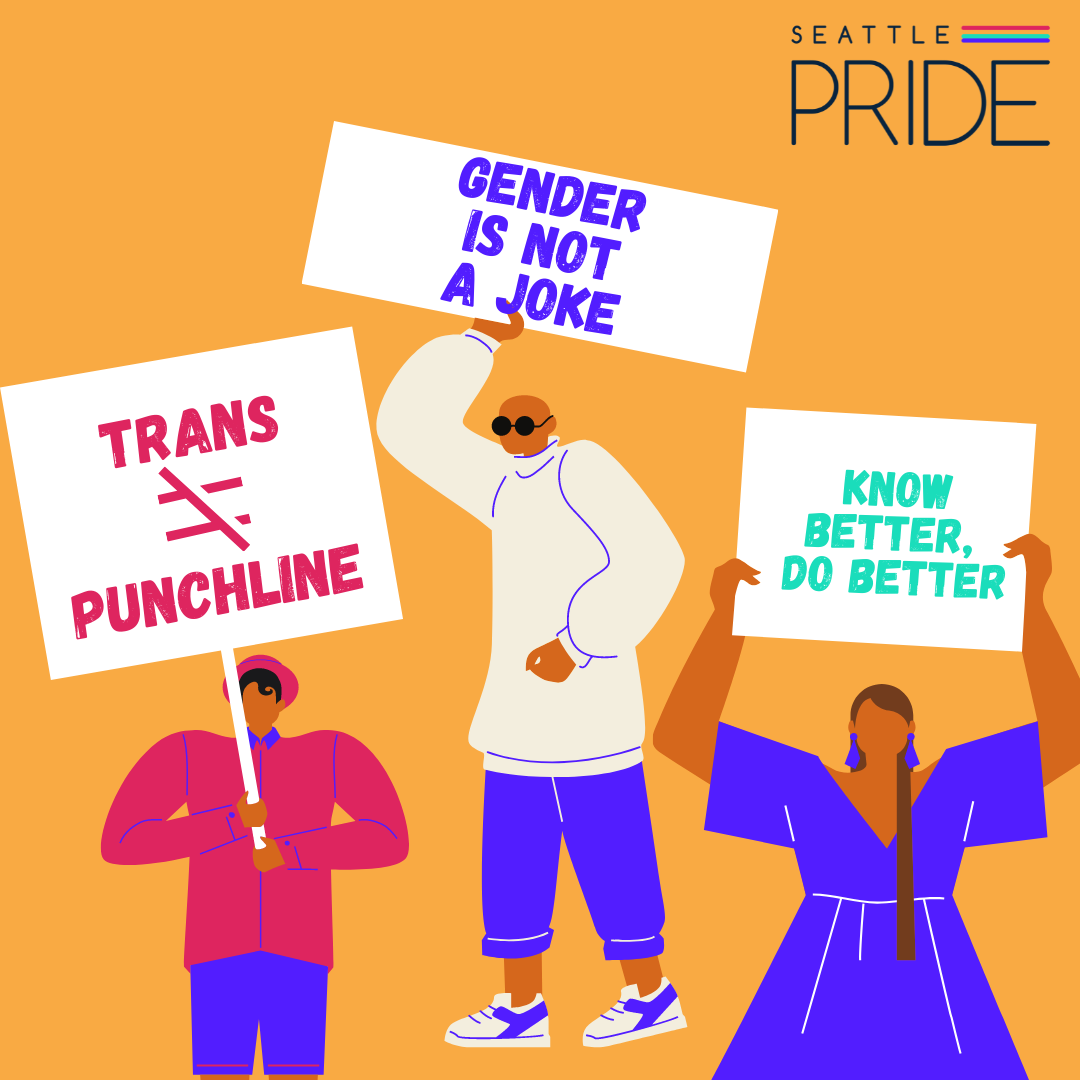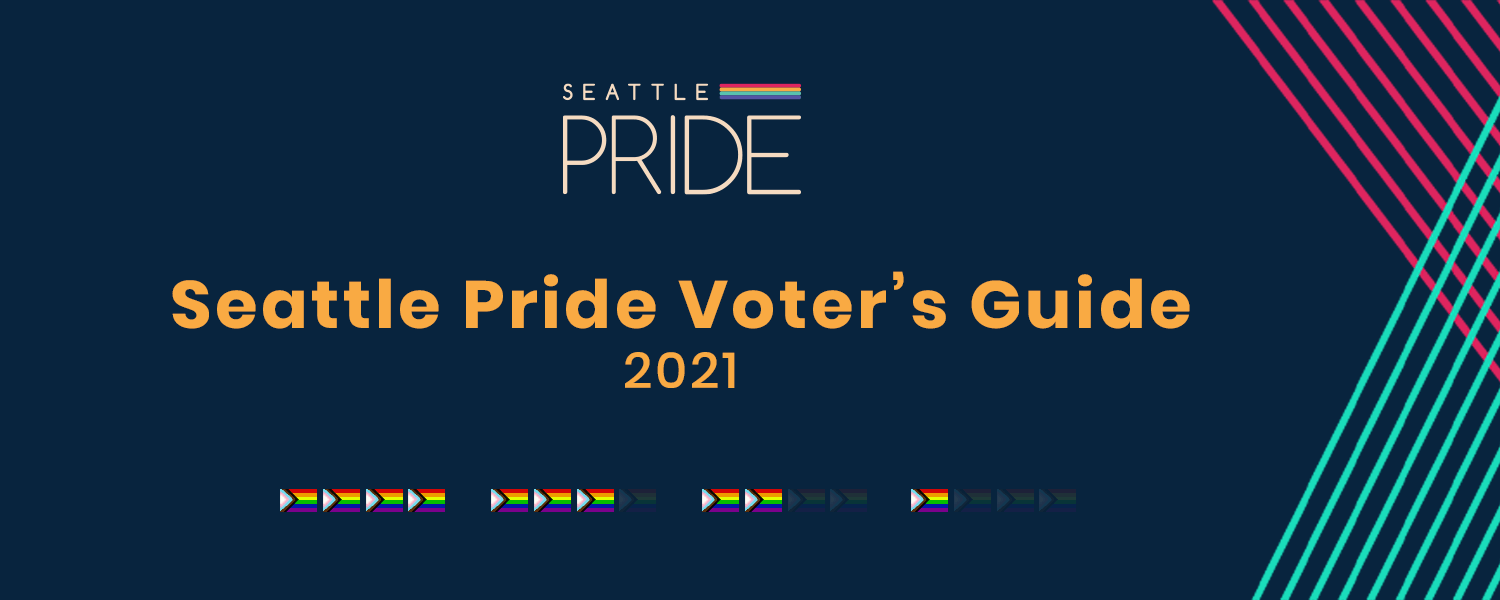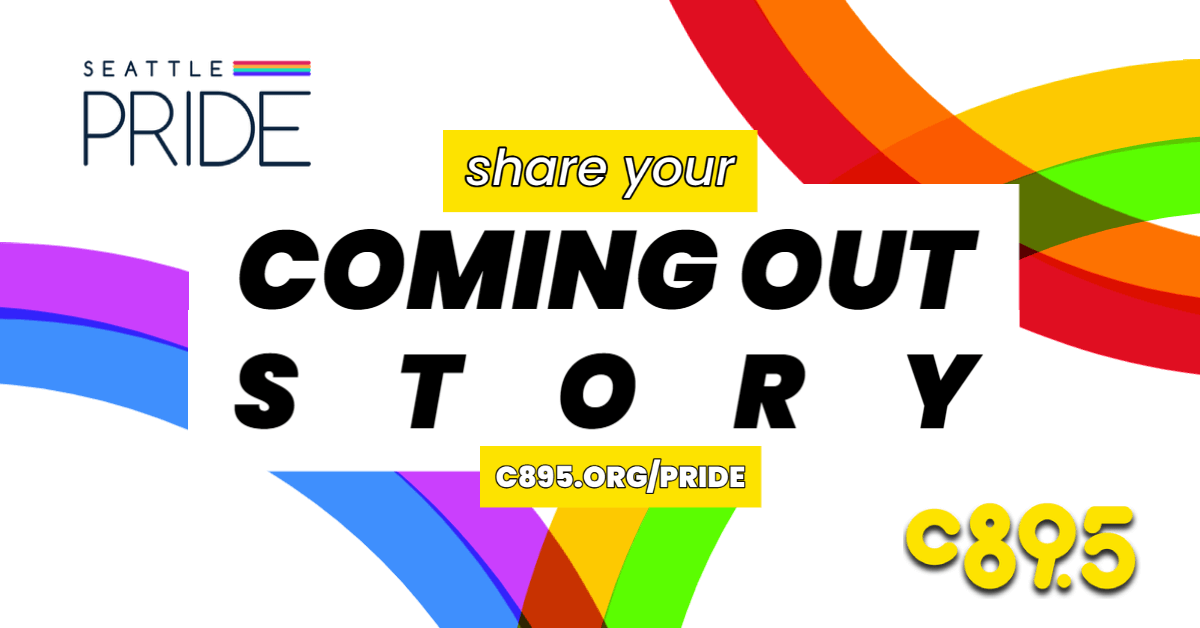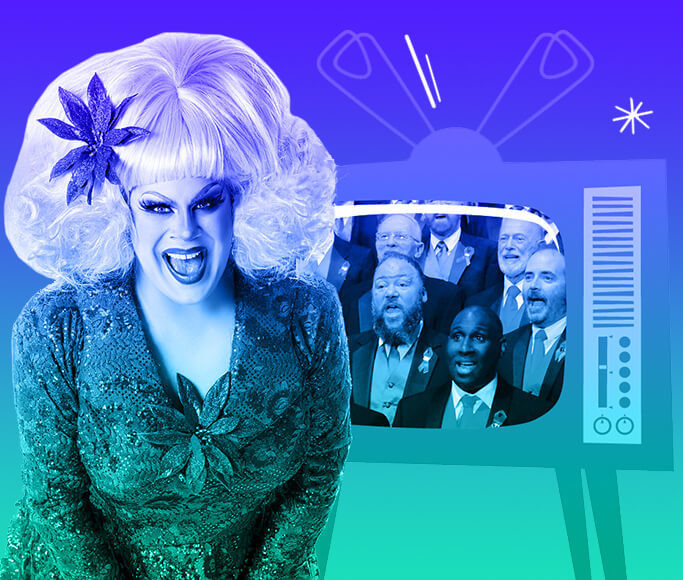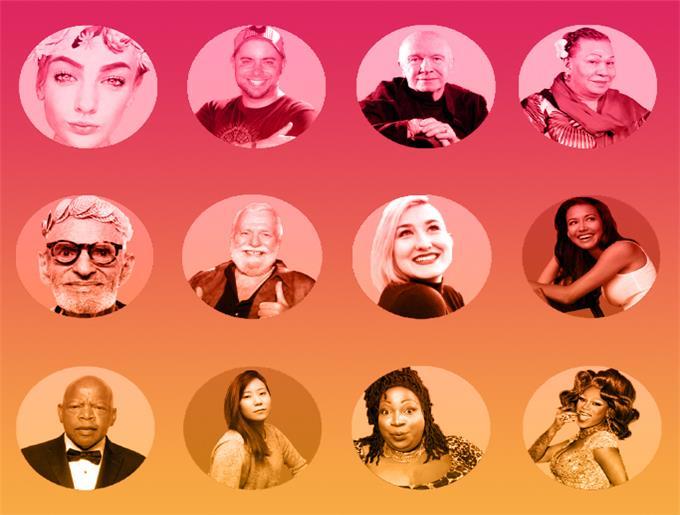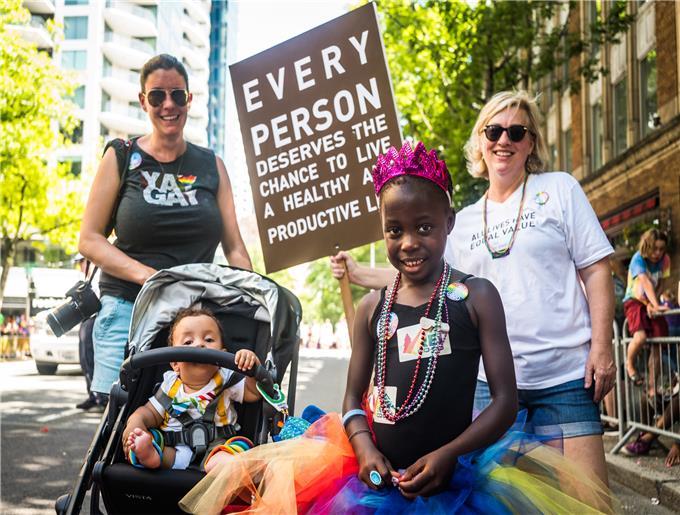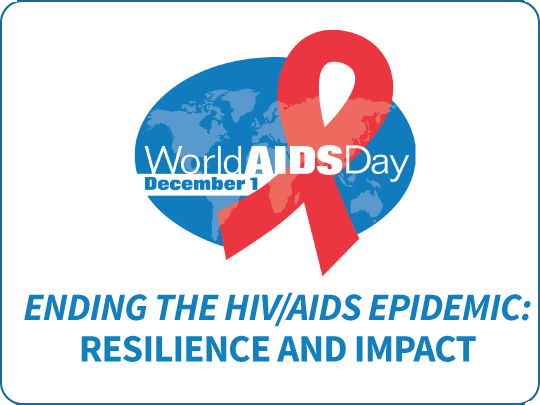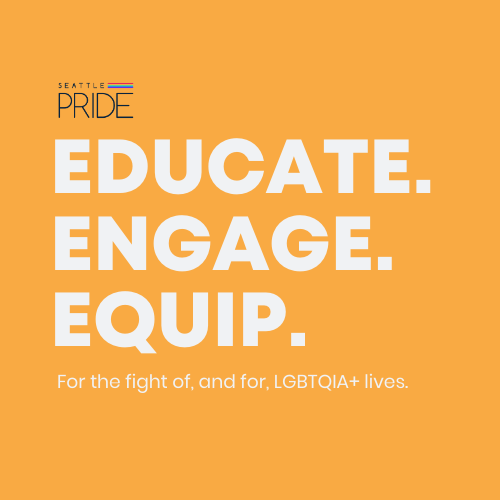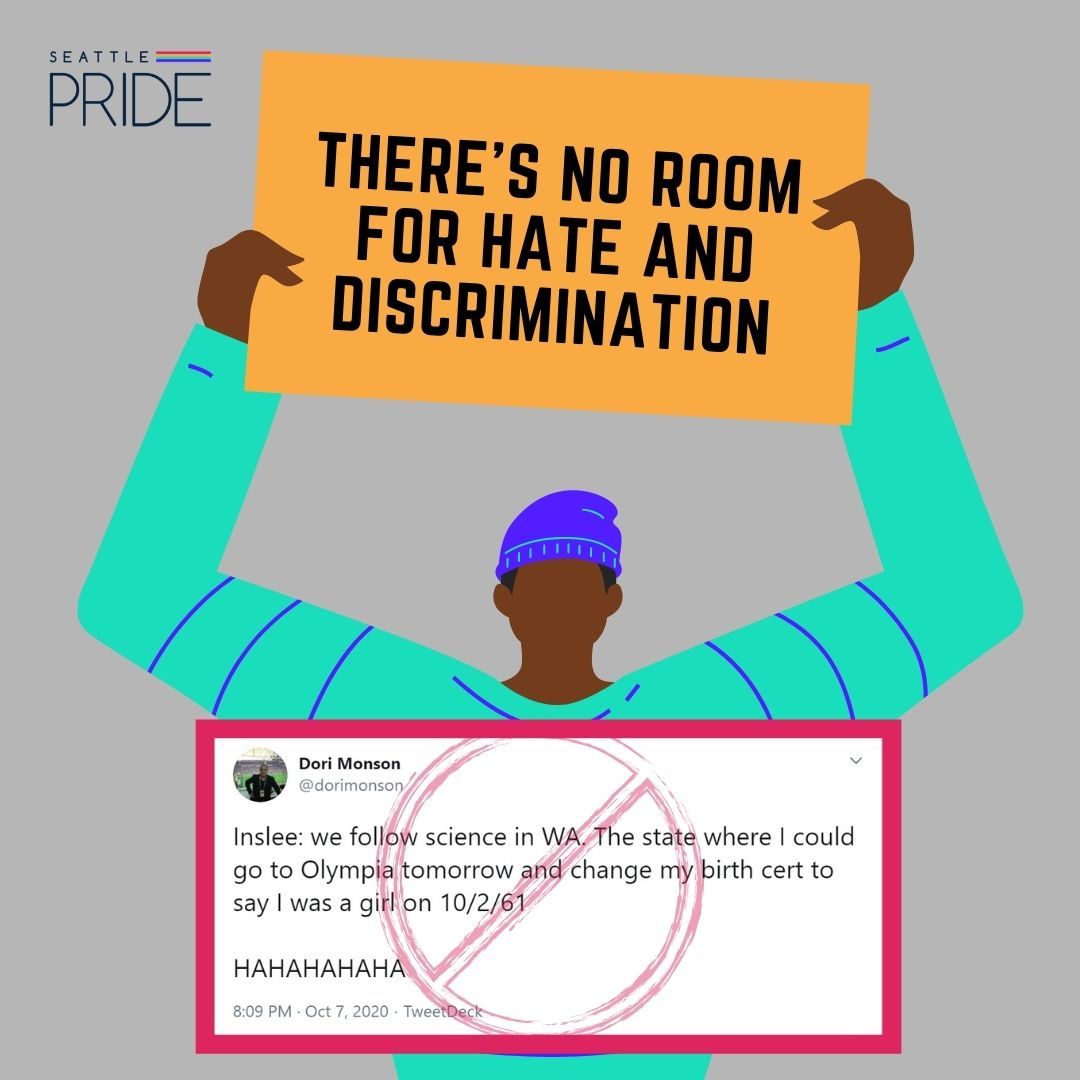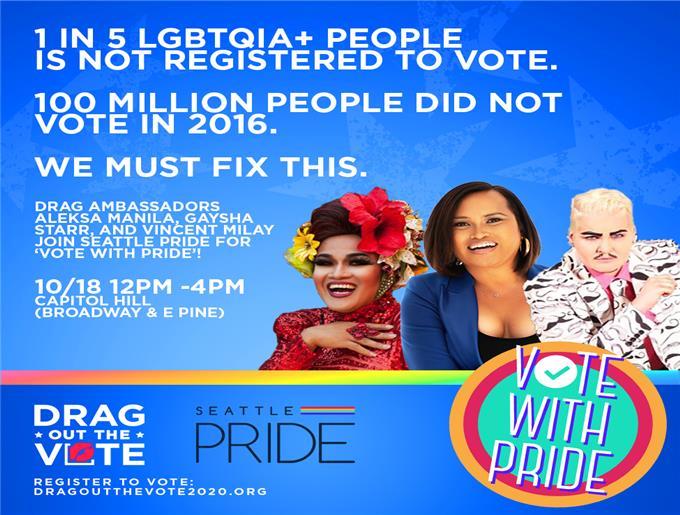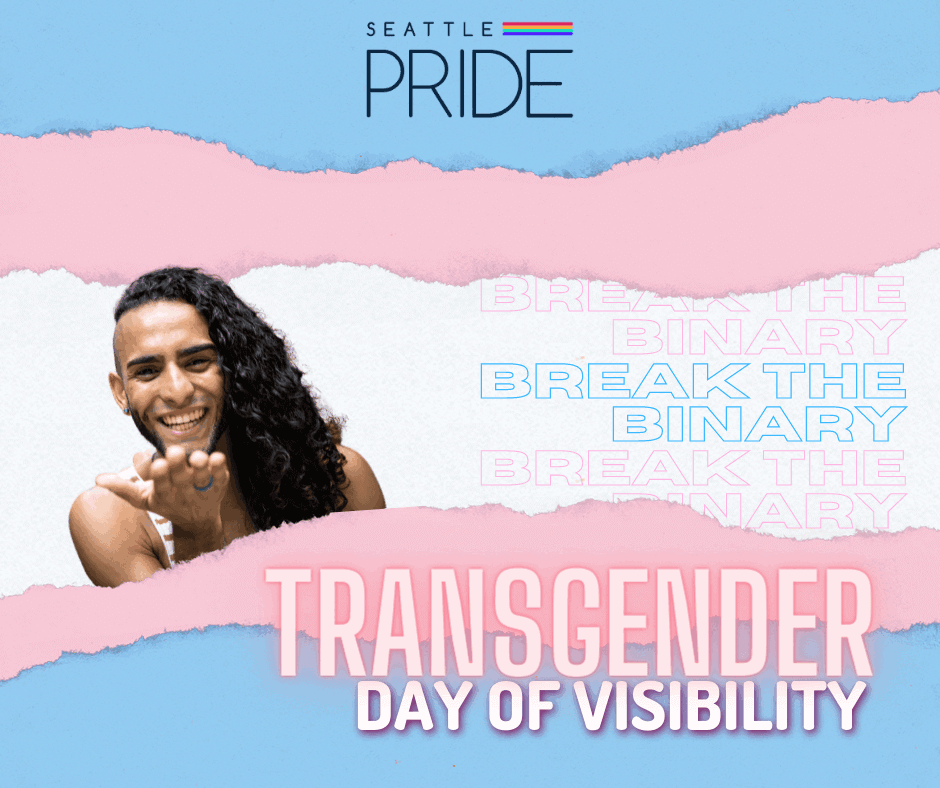
Transgender Day of Visibility: March 31, 2022
Mar 30, 2022 | Seattle Pride
Transgender Day of Visibility stands as a celebration of a vibrant transgender community that continues to thrive, grow, and advocate for their rights. Transgender folks have made incredible strides in recent years, breaking down barriers in the worlds of television, film, theatre, politics, sports, business, and so much more... but theirs is a community under constant attack.
Message from Seattle Pride to our Transgender Community
We see you, and we value you. Our hearts break with yours with every new tragedy, and soar with yours with every new wall you knock down. You are the cornerstone to our LGBTQIA+ community, and we recommit to fighting for your rights, protections, and access in 2022 and beyond.
How to be an Ally
From TransEquality.org
There is no one way to be a ‘perfect’ ally. The transgender community is diverse and complex, coming from every region of the United States and around the world, from every racial and ethnic background, and from every faith community. This means that different members of the transgender community have different needs and priorities. Similarly, there is no one right way to handle every situation, or interact with every trans person. Be respectful, do your best, and keep trying.
You don’t have to understand someone’s identity to respect it. Some people haven’t heard a lot about transgender identity, or have trouble understanding what it means to be trans, and that’s okay. But all people, even those whose identities you don’t fully understand, deserve respect.
You can’t always tell if someone is transgender simply by looking at them. Many people expect that they’ll “just know” when someone is trans, and may be surprised to learn that this isn’t always true. Since there is no one transgender experience, there is no one way for transgender people to look, either. This also means that transgender people may be in groups or gatherings that you attend without you knowing it, making it important to be an outspoken ally and supporter even in spaces that you think don’t have any transgender people in them.
There is no “one right way” to be transgender. Some transgender people choose to medically transition, and some don’t. Some transgender people choose to legally change their names or ID documents, and some don’t. Some transgender people choose to change their appearance (like their clothing or hair), and some don’t. Likewise, some transgender people may want to do many of those things but are unable to because they can’t afford it or for safety reasons. A transgender person’s identity does not depend on what things they have or haven’t done to transition, and no two transgender people’s journeys are exactly alike.
Continue to educate yourself. One of the simplest ways to be a strong ally is to take your education into your own hands. It’s important to have conversations with the trans people in your life, but it’s also important for you to seek out resources and information on your own. A few great places to start:
- Frequently Asked Questions about Transgender People
- Understanding Non-Binary People
- About Transgender People
How to Interact
Use the language a transgender person uses for themselves. No two transgender people are exactly the same, and different transgender people may use different words to describe themselves. You should follow the lead of each transgender person, as they will best know the language that is right for them.
If you don’t know what pronouns to use, ask. A simple way to see what pronouns someone uses—he, she, they, or something else—is to wait and see if it comes up naturally in conversation. If you’re still unsure, ask politely and respectfully, without making a big deal about it. Sharing your own pronouns is a great way to bring up the topic—for example, “Hi, I’m Rebecca and I use she/her/hers as my pronouns. How about you?” If you accidentally use the wrong pronouns, apologize and move on. Making a big deal out of a pronoun mistake may be awkward and often draws unwanted attention to the transgender person.
Be careful and considerate about what other questions you ask. There are many topics—medical transition, life pre-transition, sexual activity—that you may be curious about. That doesn’t mean it’s appropriate to ask a transgender person about them, or expect a transgender person to be comfortable sharing intimate details about themselves. There are two questions you can ask yourself that may help determine if a topic is appropriate to bring up:
“Do I need to know this information to treat them respectfully?” Asking someone’s name and pronoun is almost always appropriate, as we use that information in talking to and about each other every day. Beyond that, though, you may be curious about questions that are not things you truly need to know. For example, a transgender coworker’s surgical history is rarely information that you need to know.
“Would I be comfortable if this question was turned around and asked of me?” Another good way to determine if a question is appropriate is to think about how it would feel if someone asked you something similar. For example, it would probably not feel appropriate for a coworker to ask you about your private areas of your body. Likewise, it’s probably not appropriate to ask similar questions about a transgender coworker’s body.
Here are some specific topics that many transgender people are uncomfortable discussing with anyone but those closest to them:
- Their dead name (aka, their previous name: never call it their “real” name!) or photographs from before they transitioned
- What hormones they are (or aren’t) taking
- What surgeries they have (or have not) had
- Questions related to sexual relationships
Someone’s transgender identity is their private information to share, or not. Just because someone has told you that they are transgender does not necessarily mean that they have told everyone in their life. A transgender person may not choose to tell others that they are transgender because it is unsafe to do so, because they’re worried they’ll be mistreated or fired, or simply because they don’t want to share that information with someone. It is not up to you to decide who should or shouldn’t know that a particular person is transgender. Similarly, transgender people should be the ones to decide how much information is being shared: a transgender person may be open about being trans, but only want to discuss medical issues with certain close friends. Simply because a transgender person has told you something about their experiences doesn’t mean they want everyone to know.
Avoid compliments or advice based on stereotypes about transgender people, or about how men and women should look or act. People sometimes intend to be supportive but unintentionally hurt transgender people by focusing on their looks or whether they conform to gender stereotypes. Here are some examples of what to avoid, as they often feel like backhanded compliments:
- “You look like a real woman! I never would have known that you’re trans.”
- “You would look less trans if you just got a wig/shaved better/wore more makeup/etc.”
- “No real man would wear clothing like that. You should change if you don’t want people to know you’re transgender.”
- “I’d date him, even though he’s transgender.”
A message from President Joe Biden
"To everyone celebrating Transgender Day of Visibility, I want you to know that your President sees you. The First Lady, the Vice President, the Second Gentleman, and my entire Administration see you for who you are — made in the image of God and deserving of dignity, respect, and support. On this day and every day, we recognize the resilience, strength, and joy of transgender, nonbinary, and gender nonconforming people. We celebrate the activism and determination that have fueled the fight for transgender equality. We acknowledge the adversity and discrimination that the transgender community continues to face across our Nation and around the world." (Read the rest of the White House Proclamation for Transgender Day of Visibility, here.)

